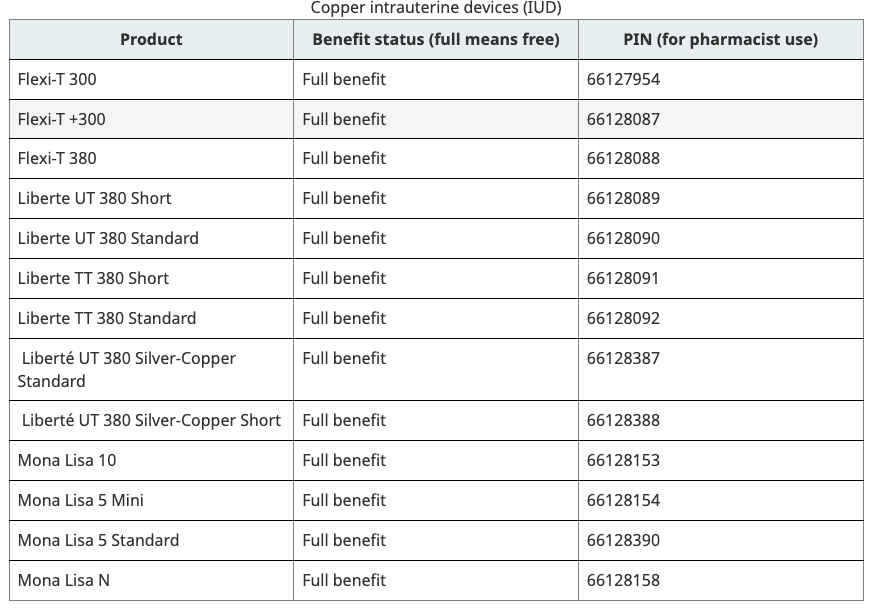IUD/IUS Contraception
An intrauterine device (IUD) is a highly effective, long-term birth control method. It is a small, T-shaped device placed in the uterus to prevent pregnancy. The device is made of a plastic frame with either copper (non-hormonal IUD) or progestin (hormonal IUD) to enhance its effectiveness.
In Canada, there are two main types of IUDs:
- Hormonal IUDs – release progestin (levonorgestrel) to prevent pregnancy
- Copper (Non-Hormonal) IUDs – use copper to create a sperm-toxic environment
Both options provide >99% effectiveness and are reversible, meaning fertility returns immediately after removal.
Who Should Consider an IUD?
IUDs are an excellent option for individuals or couples seeking long-term, reliable contraception. They are ideal for those who:
- Want an effective, low-maintenance birth control method (no daily pill or barrier methods required)
- Prefer a hormone-free option (copper IUD) or low-hormone alternative (hormonal IUDs)
- Plan for future pregnancies, as fertility returns immediately upon removal
- Experience heavy or painful periods, as hormonal IUDs can reduce menstrual bleeding and cramps
- Are going through perimenopause and need relief from hormonal fluctuations
- Need emergency contraception, as a copper IUD can be used within five days of unprotected sex
IUDs can significantly improve quality of life by providing reliable contraception and, for some, reducing period-related discomfort.
Gentle IUD insertions and removals: Our Approach
We understand that IUD insertion can be a concern for some patients. At Mint Integrative Health, we use evidence-based techniques to minimize discomfort and ensure a safe, supportive experience.
How We Make IUD Insertions More Comfortable
Education & Preparation:
Studies show that well-informed patients have a smoother IUD experience. At Mint, we provide detailed guidance on what to expect before, during, and after your insertion. You control the pace, and how much we explain, ensuring a stress-free, comfortable experience.
Personalized Insertion Plan:
During your screening consultation, we’ll discuss your past experiences, concerns, and preferences to create a customized plan for your procedure.
Pain Management Options
- Oral Analgesics – Ibuprofen or acetaminophen can reduce cramping and inflammation before and after insertion.
- Cervical Block (Lidocaine Injection) – Local anesthetic numbs the cervix, significantly reducing insertion discomfort.
- Inhaled Anesthetic Gas (Penthrox) – Methoxyflurane is an inhaled gas that rapidly relieves pain and anxiety during the procedure. Patients control the dose through a handheld inhaler.
- Cervical Dilation – In select cases, we use medication to soften and dilate the cervix, making insertion easier.
- Optimal Timing – IUD insertions are scheduled during or right after your period, when the cervix is naturally more open.
Ultrasound-guided IUD Insertions
At Mint, we use ultrasound guidance for all IUD insertions to enhance safety and accuracy. This allows us to:
- Measure and visualize the uterus before and after insertion
- Confirm the correct placement of the IUD
- Identify any anatomical concerns that may affect IUD suitability
- Minimize discomfort and reduce the need for repositioning
Ultrasound guidance ensures a safer, more precise procedure, improving patient confidence and comfort.
IUD Doctor Referral Form
Download hereIUD Cost
Beginning April 1, 2023, PharmaCare will pay for many prescription contraceptives for any B.C. resident. You can get them at most community pharmacies, with a prescription and your BC Services Card.


Book Your Consultation
If you’re considering an IUD, our team at Mint is here to help. We provide comprehensive consultations, personalized recommendations, and expert care to ensure you feel confident in your contraceptive choice. We pride ourselves on having short, or no wait times for insertions and removals, providing rapid access to IUDs.
Book an appointment to learn more about your options!


